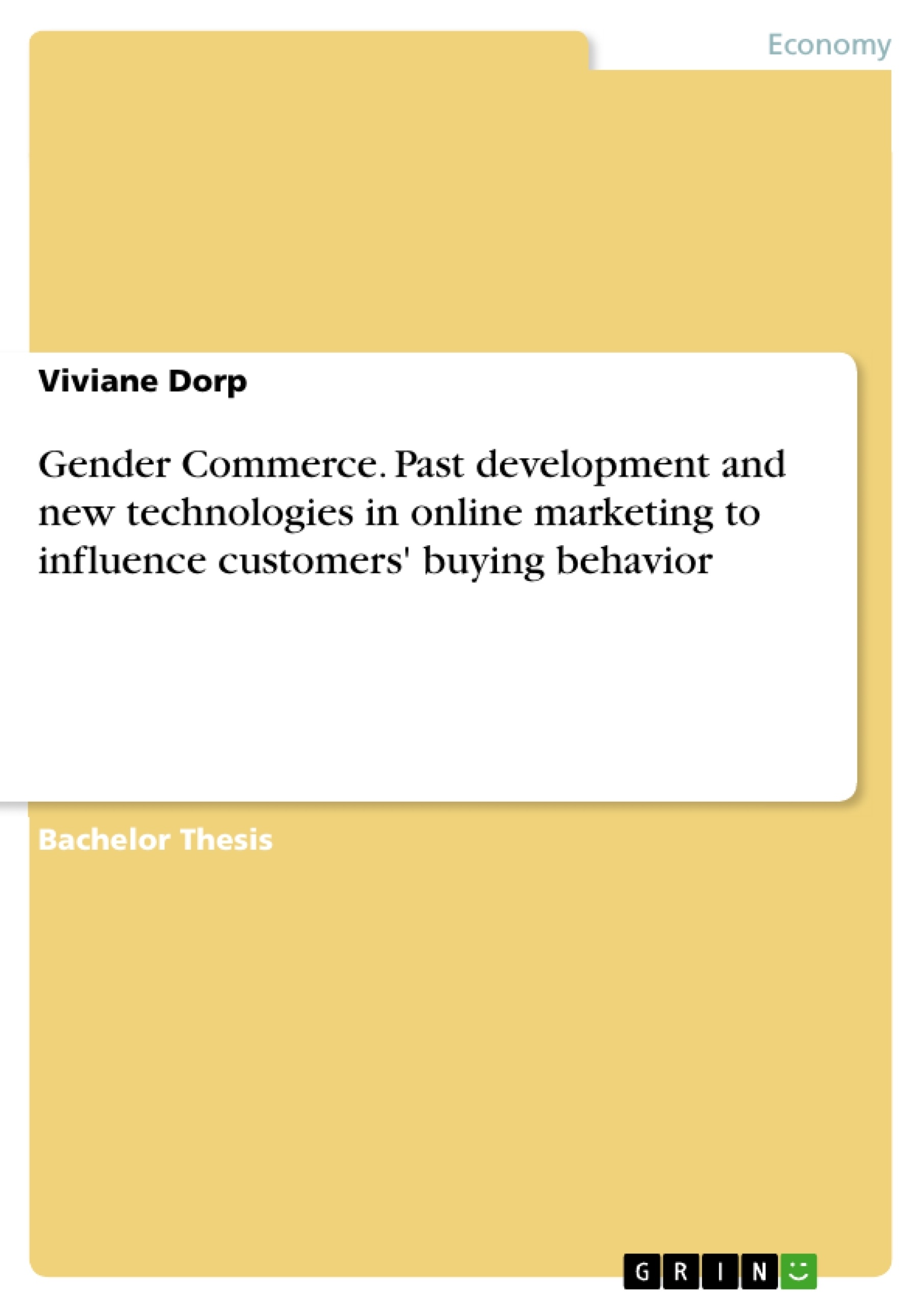Gender marketing as a new holistic marketing approach has been intensely discussed over the last couple of years. At the first glance it can surely appear discriminating to differentiate customers by gender, but the genuine intention of gender marketing is to accept and appreciate both genders as they are and develop products according to their gender specific needs. Therefore, it is important to understand that by talking about gender it does not imply talking about fixed roles of males and females in society. Those roles have changed significantly over the last decades and are expected to continue changing over upcoming years. It rather means taking gender specific needs, wishes and characteristics in consideration while developing products and company strategies in order to achieve long-term success and customer loyalty.
But why is this even relevant? Women have been buying products anyway, right? Certainly, women have been buying products without a gender specific approach already. However, the truth is that our markets are saturated and the flood of information customers are confronted with everyday exceeds their cognitive ability. This itself shows the importance of tailoring products as well as communication strategies to customers’ needs. Additionally, as mentioned above, social statuses of men and women have been changing continuously. As a result of women’s access to higher education, better careers and with that higher incomes independence of women has enhanced over time.
Even if women already have a strong purchasing power, it has not reached its full potential, yet. What also comes along with being independent and earning own money, is making ones own decisions. Women and men differ in their general decision making process and buying behavior. Thinking of women already buying products, which do not perfectly fit their needs, in an environment (either offline or online) they do not feel completely comfortable in, it can lead to an enormous competitive advantage to adjust product and selling strategies to your customers’ needs.Transferring this to e-commerce and buying behavior online, there are significant differences between male and female throughout the decision making process that draw companies‘ attention in order to optimize communication strategies and product development.
Inhaltsverzeichnis (Table of Contents)
- 1 INTRODUCTION
- 2 GENDER MARKETING
- 2.1 DEFINITION OF GENDER MARKETING
- 2.2 HISTORICAL BACKGROUND AND PAST DEVELOPMENT
- 3 RISE OF E-COMMERCE
- 3.1 DEFINITIONS, PAST DEVELOPMENT AND TRENDS
- 3.2 DEFINITION AND DIFFICULTIES OF ONLINE MARKETING
- 3.3 DEMOGRAPHIC INTERNET USER DATA
- 3.4 ONLINE MARKETING TOOLS
- 3.4.1 SEO
- 3.4.2 SEARCH ENGINE ADVERTISING
- 3.4.3 DISPLAY ADVERTISING
- 3.4.4 TRACKING & AFFILIATES
- 3.4.5 ECRM
- 3.4.6 SOCIAL MEDIA MARKETING & INFLUENCER
- 3.4.7 MOBILE MARKETING
- 3.4.8 ONLINE PRICING-STRATEGIES
- 4 CONSUMER INSIGHTS/ PREPARATION FOR THE SURVEY
- 4.1 CONSUMER BEHAVIOR MODEL
- 4.2 PAY-WHAT-YOU-WANT PRICING MODEL
- 4.3 ARISING HYPOTHESIS'S BY CONSUMER INSIGHTS
- 5 STUDY
- 5.1 SURVEY DESIGN
- 5.2 DESCRIPTIVES
- 5.3 METHODS, MODELS
- 6 RESULTS
Zielsetzung und Themenschwerpunkte (Objectives and Key Themes)
This bachelor thesis examines the impact of gender marketing on e-commerce and online buying behavior. It aims to demonstrate the importance of tailoring products and communication strategies to the specific needs of different genders, particularly in the context of a saturated market and changing social statuses. The study also investigates the Pay-What-You-Want pricing model, analyzing consumer willingness to pay for various products and identifying factors influencing this willingness.
- The evolution of gender marketing and its application in e-commerce.
- The influence of gender on online shopping behavior, including search patterns, product preferences, and decision-making processes.
- The effectiveness of the Pay-What-You-Want pricing model in online environments.
- Factors contributing to consumer willingness to pay for products under the Pay-What-You-Want model.
- The potential for gender-specific marketing strategies to create competitive advantages in the online marketplace.
Zusammenfassung der Kapitel (Chapter Summaries)
The introduction provides a brief overview of gender marketing and its relevance in today's saturated markets. Chapter 2 delves into the definition and historical background of gender marketing, emphasizing the importance of understanding gender-specific needs and preferences. Chapter 3 focuses on the rise of e-commerce, analyzing its definitions, past development, and trends. This chapter also explores online marketing tools, including SEO, search engine advertising, display advertising, tracking and affiliates, ECRM, social media marketing, mobile marketing, and online pricing strategies. Chapter 4 examines consumer insights and behavior models, specifically focusing on the Pay-What-You-Want pricing model and exploring emerging hypotheses related to consumer behavior.
Schlüsselwörter (Keywords)
The primary keywords and focus topics of this thesis include gender marketing, e-commerce, online buying behavior, Pay-What-You-Want pricing model, consumer behavior, willingness to pay, online marketing strategies, SEO, search engine advertising, social media marketing, and mobile marketing. These keywords encapsulate the primary themes and concepts explored within the text, highlighting the importance of understanding gender-specific needs and preferences in today's digital marketplace.
- Quote paper
- Viviane Dorp (Author), 2017, Gender Commerce. Past development and new technologies in online marketing to influence customers' buying behavior, Munich, GRIN Verlag, https://www.grin.com/document/364669




